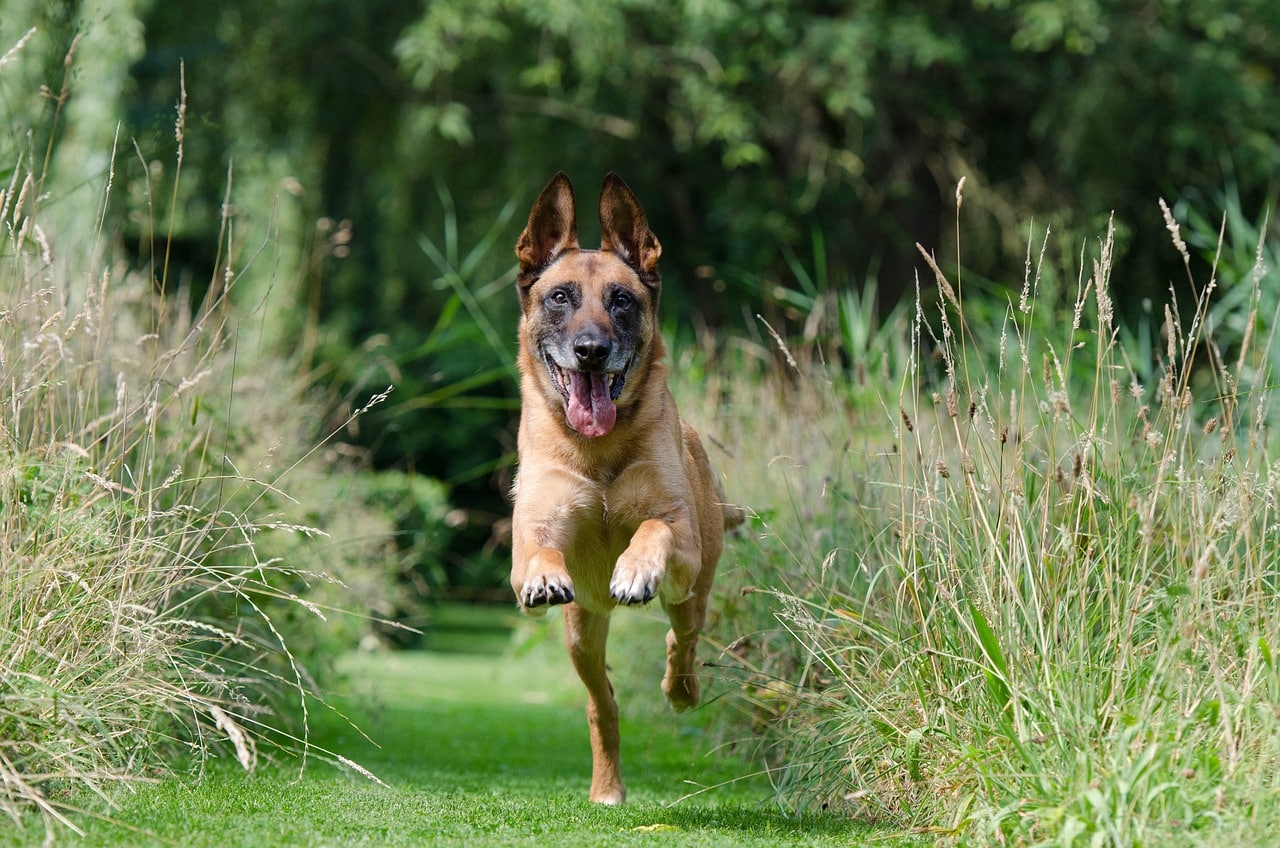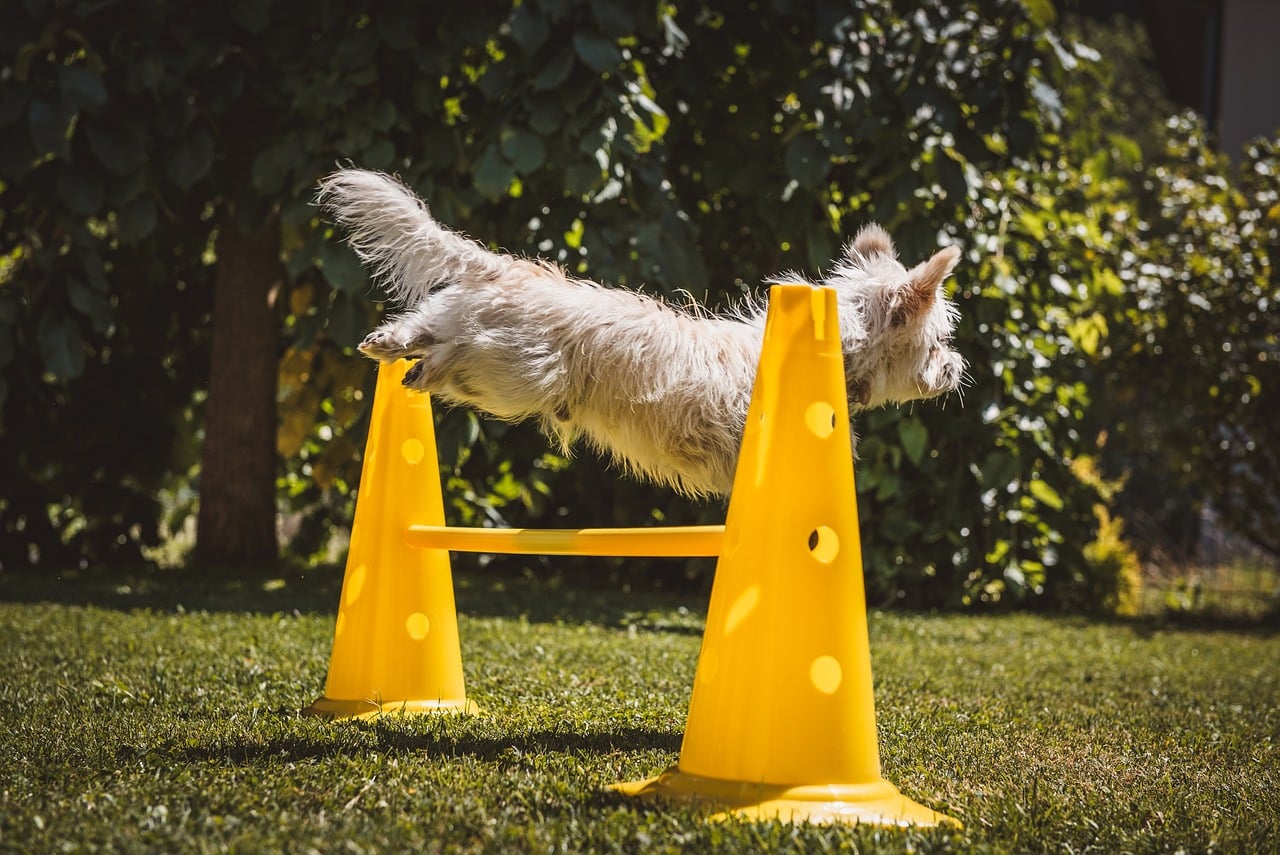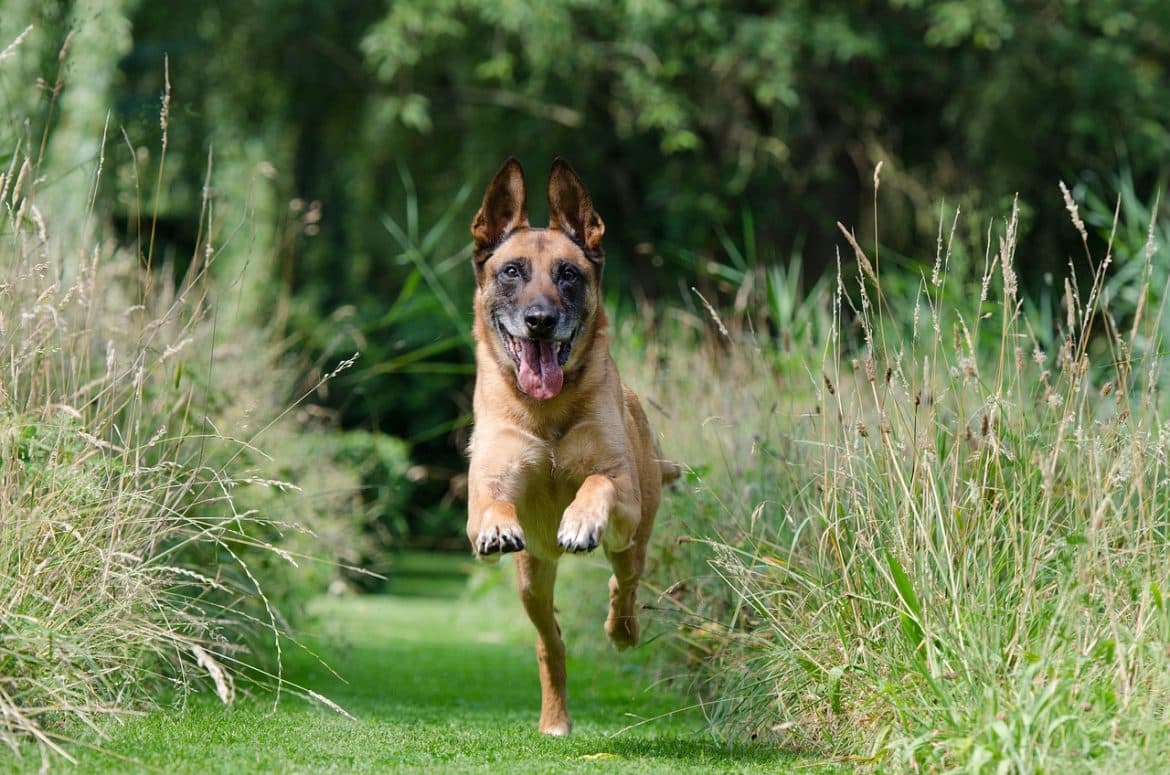Do you dread leaving your furry friend alone, knowing that they will become anxious and distressed? If so, fear not! In this article, you will discover effective solutions to overcoming separation anxiety in dogs through the power of training routines. Whether you have a new puppy or an older canine companion, implementing these techniques will provide you and your four-legged pal with the peace of mind you both deserve. Say goodbye to the guilt and stress of leaving your dog alone, and say hello to a happy, confident, and independent pooch!

This image is property of pixabay.com.
Understanding Separation Anxiety in Dogs
What is Separation Anxiety?
Separation anxiety is a common behavioral issue in dogs that occurs when they are left alone or separated from their owners. It can manifest in various ways, including excessive barking, destructive chewing, urinating or defecating indoors, pacing, and trying to escape. Dogs experiencing separation anxiety often exhibit these behaviors within minutes of their owner's departure and may continue throughout the duration of their absence.
Common Symptoms of Separation Anxiety
It is important to recognize the symptoms of separation anxiety in order to address the issue effectively. Dogs with separation anxiety may display excessive whining, howling, or barking when left alone. They may engage in destructive behaviors, such as chewing furniture or personal belongings, digging at doors or windows, or attempts to escape confinement. Other signs can include pacing, drooling, excessive salivation, trembling, and even self-harm in severe cases.
Causes of Separation Anxiety
Separation anxiety can have various underlying causes that contribute to its development. A dog may have experienced a significant life change, such as the loss of a family member or a move to a new home. Dogs who have experienced abandonment or have been rehomed multiple times may also be more prone to separation anxiety. Additionally, dogs that have had limited socialization experiences or have a strong attachment to their owners are more likely to develop separation anxiety.
Creating a Safe Environment for Your Dog
Establishing a designated space
One way to help your dog feel secure is to establish a designated space where they can retreat to when alone. This space could be a crate, a specific room, or a comfortable area with their bed, toys, and water. Having a safe and familiar space can provide a sense of security for your dog, helping to alleviate some of their anxiety.
Providing comfort and entertainment
Leaving comforting items with your dog, such as a blanket or an article of your clothing that carries your scent, can help ease their anxiety. Additionally, providing interactive toys or puzzle feeders can keep your dog mentally stimulated and distract them from their anxiety while you are away.
Using crate training
Crate training can be a valuable tool in managing separation anxiety. When done correctly, a crate can become a safe haven for your dog, creating a den-like environment where they feel secure. Introduce your dog to the crate gradually, using positive reinforcement and rewards to create positive associations. The crate should never be used as a punishment, but rather as a safe space where your dog can relax.
Gradual Departures and Desensitization
Simulating departures
Before leaving your dog alone, try simulating departures to help desensitize them to the triggers that typically cause anxiety. Put on your shoes or pick up your keys without actually leaving the house. By repeating these actions without actually leaving, you can help your dog become accustomed to the cues associated with your departure.
Increasing time away
Start by leaving your dog alone for short periods and gradually increase the duration as they become more comfortable. For example, begin with just a few minutes of separation and gradually extend it to 15 minutes, then 30 minutes, and so on. This gradual increase in time away will allow your dog to build confidence and reduce their anxiety.
Exposure to triggers in a controlled manner
Expose your dog to the triggers that typically precede your departures, such as putting on a coat or grabbing your bag, in a controlled manner. Repeat these actions without actually leaving, gradually increasing their duration. This can help your dog become desensitized to these cues and reduce their anxiety when they occur.
Positive Reinforcement and Counterconditioning
Rewarding calm behavior
Whenever your dog displays calm behavior, such as remaining relaxed or engaging in a desirable activity while you are away, reward them with treats, praise, or affection. This positive reinforcement helps to reinforce their calm state and can make them associate being alone with positive experiences.
Desensitizing to departure cues
Gradually desensitize your dog to departure cues by associating them with positive experiences. For example, put on your coat or grab your keys and then immediately engage in an enjoyable activity with your dog, such as playing their favorite game or giving them a treat. This can help your dog develop a positive association with these cues, reducing their anxiety when they occur.
Associating departures with positive experiences
Create a positive departure routine by leaving your dog with a special treat or puzzle toy that they only receive when you are away. This can help them associate your departure with something enjoyable, alleviating their anxiety. Additionally, when you return, greet your dog calmly and avoid making a big fuss to prevent reinforcing their excitement or anxiety.

This image is property of pixabay.com.
Implementing a Consistent Routine
Establishing regular feeding and exercise times
Maintaining a consistent routine for feeding and exercise can provide a sense of stability for your dog. Establish specific times for meals and exercise, and try to stick to these times as closely as possible. This can help your dog feel more secure and reduce their anxiety when you are not present.
Creating a predictable schedule
In addition to regular feeding and exercise times, creating a predictable schedule for other activities can also be beneficial. For example, set specific times for grooming, training sessions, and playtime. This structure can help your dog feel more secure and confident, reducing their anxiety when they are left alone.
Maintaining consistency in departures and arrivals
Consistency in your departures and arrivals is crucial in managing separation anxiety. Try to make your departures and arrivals as low-key as possible, avoiding excessive greetings or farewells. By maintaining a consistent approach, you can help your dog understand that your absence is temporary and nothing to be anxious about.
Seeking Professional Help
Consulting a veterinarian or animal behaviorist
If your dog's separation anxiety persists or is causing significant distress, it may be beneficial to consult with a veterinarian or an animal behaviorist. They can help determine the underlying causes of the anxiety and develop a customized treatment plan to address your dog's specific needs.
Exploring medication options when necessary
In severe cases, medication may be recommended to help manage your dog's separation anxiety. Consult with your veterinarian to discuss the potential benefits and risks of medication for your dog. Medication should always be used in combination with behavior modification techniques and under the guidance of a professional.
Working with a professional trainer
A professional dog trainer experienced in separation anxiety can provide invaluable guidance and support in helping your dog overcome their anxiety. They can teach you techniques and strategies to implement at home, tailor exercises to your dog's needs, and provide ongoing support throughout the training process.

This image is property of pixabay.com.
Socialization and Enrichment Activities
Providing opportunities for social interactions
Socialization plays a vital role in a dog's overall well-being and can help reduce separation anxiety. Arrange playdates with other friendly dogs, take your dog to dog parks or training classes, and allow them to interact with familiar and trusted humans. These social interactions can provide mental stimulation and help alleviate anxiety when apart from their owners.
Engaging in interactive play and training
Interactive playtime and training sessions provide mental stimulation for your dog, which can help tire them out and reduce anxiety. Engage in activities that mentally challenge your dog, such as puzzle toys, hide-and-seek games, or obedience training. These activities can distract their mind from their anxiety and foster a positive bond between you and your dog.
Mental stimulation through puzzles and toys
Providing your dog with puzzle toys and interactive feeding devices can keep them mentally stimulated while you are away. These toys require problem-solving skills and can help redirect your dog's energy towards a positive and engaging activity. Mental stimulation can help alleviate boredom and anxiety, making your dog's alone time more enjoyable.
Avoiding Reinforcement of Anxious Behavior
Ignoring attention-seeking behaviors
It is essential to avoid reinforcing attention-seeking behaviors exhibited by your dog when you are preparing to leave or returning home. If your dog becomes anxious and engages in behaviors such as jumping, barking, or pawing for attention, ignore these behaviors until they have calmed down. This will help break the cycle of reinforcement, discouraging their anxious behavior.
Avoiding punishment or reprimands
Punishing or reprimanding your dog for their separation anxiety will only exacerbate their fear and anxiety. Instead, focus on positive reinforcement and reward-based training. Punishments can increase anxiety and create a negative association with your departure, making it harder for your dog to overcome their separation anxiety.
Discouraging excessive attachment
While it is natural to form a strong bond with your dog, it is important to encourage independence and discourage excessive attachment. Gradually increase the amount of time you spend apart from your dog, gradually building their confidence and tolerance for being alone. Encourage them to have positive experiences with other people and animals to reduce their reliance solely on you.
Gradual Departure Techniques
Training cues for departure
By training cues that signal your departure, such as picking up your keys or putting on your coat, you can help your dog become desensitized to these actions. Practice these cues without actually leaving, so your dog learns that they do not always lead to separation. This can help reduce their anxiety when they observe these departure cues.
Leaving and returning without fanfare
When departing and returning home, avoid making a big fuss or showering your dog with excessive attention. By keeping your arrivals and departures low-key, you can help your dog understand that these moments are routine and nothing to be anxious about. This can help create a sense of normalcy and reduce anxiety during transitions.
Building up distance and duration gradually
Start by departing for short periods and gradually increase the distance and duration of your departures. Begin with leaving your dog alone in a different room for a few minutes and gradually progress to leaving the house for longer periods. This gradual approach helps your dog build confidence and adapt to being alone without triggering excessive anxiety.
Monitoring Progress and Adjustments
Keeping a log of behavior and responses
Tracking your dog's behaviors, reactions, and progress is essential in managing their separation anxiety effectively. Keep a log of their behaviors, noting any improvements or setbacks, as well as any changes in their routine or environment. This log will help you identify triggers, track your training progress, and make any necessary adjustments to your approach.
Recognizing improvements and setbacks
Separation anxiety is a complex issue that may take time to resolve fully. Acknowledge and celebrate even small improvements in your dog's behavior, such as decreased anxiety or reduced destructive actions. However, setbacks may also occur, so it is crucial to remain patient and committed to the training process. Recognizing both progress and setbacks will allow you to adjust your strategies accordingly.
Modifying strategies based on results
As you progress through the training process, it may be necessary to modify your strategies based on the results you observe. Every dog is different, so what works for one may not work for another. Be open to tweaking your techniques or seeking additional guidance from professionals to ensure that you are providing the best possible support for your dog.
In conclusion, overcoming separation anxiety in dogs requires a combination of patience, understanding, and a consistent training routine. By providing a safe environment, using gradual departures and desensitization techniques, practicing positive reinforcement, establishing a consistent routine, seeking professional help when needed, engaging in socialization and enrichment activities, avoiding reinforcement of anxious behavior, implementing gradual departure techniques, and monitoring progress, you can help your dog overcome their separation anxiety and develop the confidence to be comfortable when left alone. Remember, every dog is unique, so tailor your approach to suit your furry friend's individual needs and consult professionals when necessary for guidance and support. With love, empathy, and the right strategies, you can help your dog feel more secure and peaceful while apart from you.


